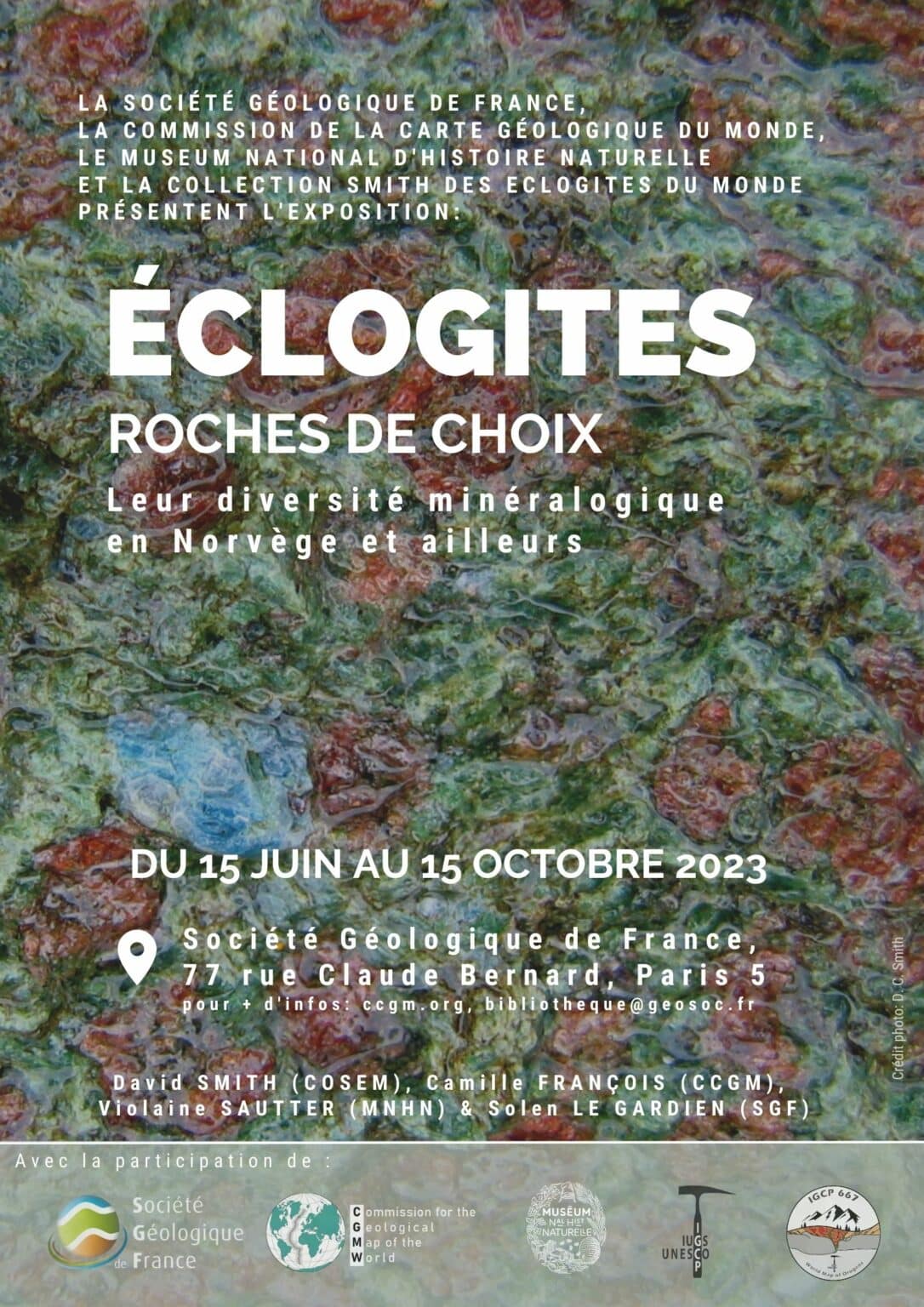About the exhibition.
In collaboration with the Muséum National d'Histoire Naturelle and the Commission de la Carte Géologique du Monde, this exhibition allows visitors to discover eclogites, rocks formed in the depths of the Earth, through works from the SGF documentary collection and, above all, samples from the COSEM. Collection Smith des Eclogites Mwave.
Why the term "eclogite" and why Norway?
Abbé René-Just Haüy coined the term "eclogite" from the Greek "εκλογή" (eklogê) meaning "choice". He thought that these rocks had "chosen" to be different from others, and described them in his Traité de minéralogie of 1822.
In 1920, Pentti Eskola (1883-1964) published a classification of metamorphic rocks based on the innovative concept of "facies", including a description of what he defined as an "eclogitic facies". The following year, he published a work on the eclogites of Norway in "Le Gneiss de l'Ouest", an enormous unit of more than 200 km of nappes that have been metamorphosed.
At the same time, Yvonne Brière (1891-1981), one of the first female geologists in France, proposed a metamorphic origin for eclogites in her thesis "Les éclogites françaises: leur composition minéralogique et chimique; leur origine", defended at the Faculté des Sciences de Paris and published in 1920. This idea, which was strongly criticised by his thesis jury, is now unanimously accepted.
Since the 1960s, with the advent of new analytical methods in petrology (electron microprobe, etc.), many other researchers have taken an interest in eclogites to understand how they can outcrop on the Earth's surface after having been created at such great depths.
A paradigm shift in geodynamics: subduction of continental crust
In 1984, the discovery of the mineral coesite in rocks of the continental crust in Italy (Chopin, 1984) and in eclogites from Norway (Smith, 1984) revolutionised geodynamics.
The presence of coesite in the eclogites is evidence of burial at depths two to three times greater than previously assumed (around 100 km). It also shows that the continental crust can also be subducted at very great depths.
A new discipline was born, called UHPM: Ultra-High Pressure Metamorphism.
This exhibition begins with a definition of eclogites and metamorphism (showcases 1 to 3) and the geodynamic processes involved in the formation of these rocks (showcases 4 to 7). It continues with the highly diverse mineralogy of Norwegian eclogites (display cases 8 to 14). The study of COSEM rocks has enabled David and his colleagues to describe new species: nyböite, Mg-Al & Fe-Al-taramite, lisetite and davidsmithite, all recognised by the International Mineralogical Association (showcases 15 & 16).
The exhibition ends with a look at the geodynamic implications of the discovery of these rocks throughout the history of our Earth (showcase 17).
This exhibition will take you on a journey from the infinitely large to the infinitely small. The study of eclogites is a vast field, ranging from regional geodynamics to crystallochemistry.


